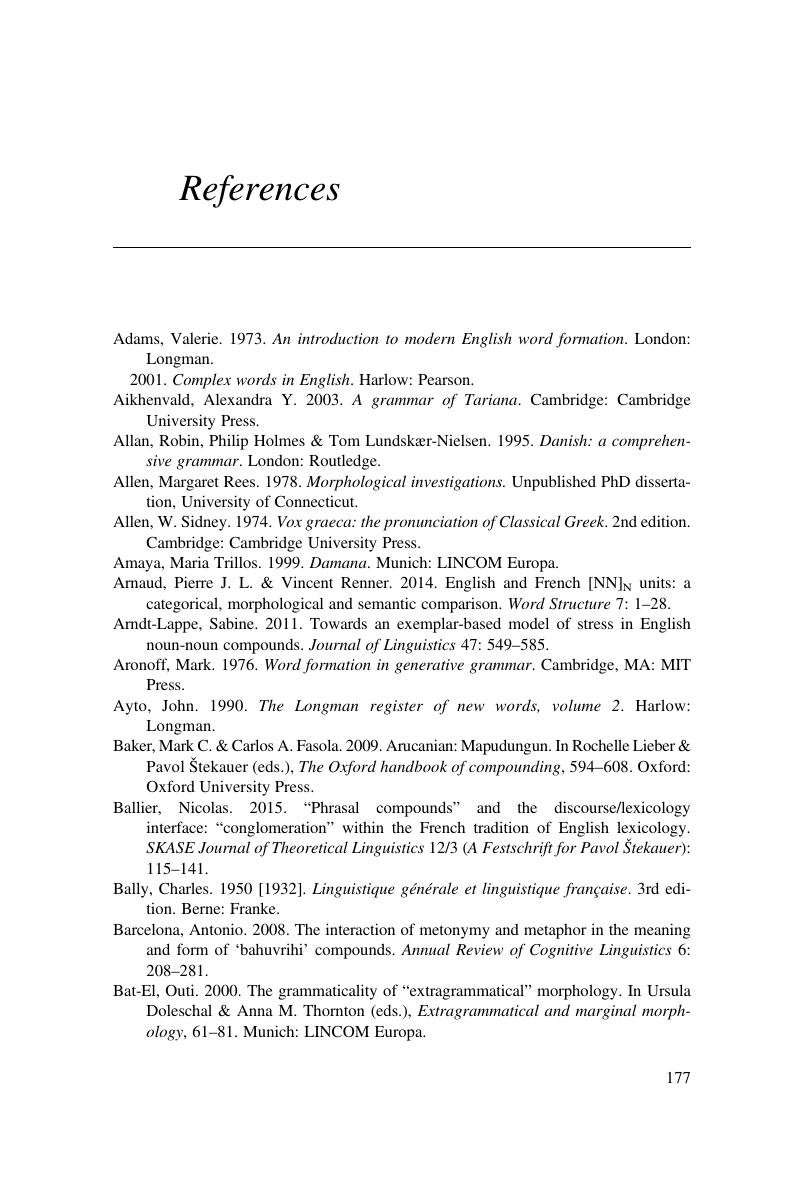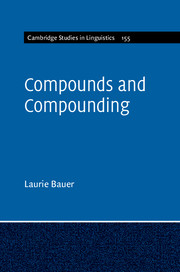Book contents
- Compounds and Compounding
- Cambridge Studies in Linguistics
- Compounds and Compounding
- Copyright page
- Contents
- Figures
- Tables
- Preface and Acknowledgements
- Abbreviations and Notational Conventions
- 1 Introduction
- 2 Compounds and Words
- 3 The Grammar of Compounds
- 4 The Semantics of Compounds
- 5 The Classification of Compounds
- 6 Facets of English Compounding
- 7 Discussion
- Appendix: Lexical One
- References
- Language Index
- General Index
- References
References
Published online by Cambridge University Press: 04 October 2017
- Compounds and Compounding
- Cambridge Studies in Linguistics
- Compounds and Compounding
- Copyright page
- Contents
- Figures
- Tables
- Preface and Acknowledgements
- Abbreviations and Notational Conventions
- 1 Introduction
- 2 Compounds and Words
- 3 The Grammar of Compounds
- 4 The Semantics of Compounds
- 5 The Classification of Compounds
- 6 Facets of English Compounding
- 7 Discussion
- Appendix: Lexical One
- References
- Language Index
- General Index
- References
Summary

- Type
- Chapter
- Information
- Compounds and Compounding , pp. 174 - 176Publisher: Cambridge University PressPrint publication year: 2017



